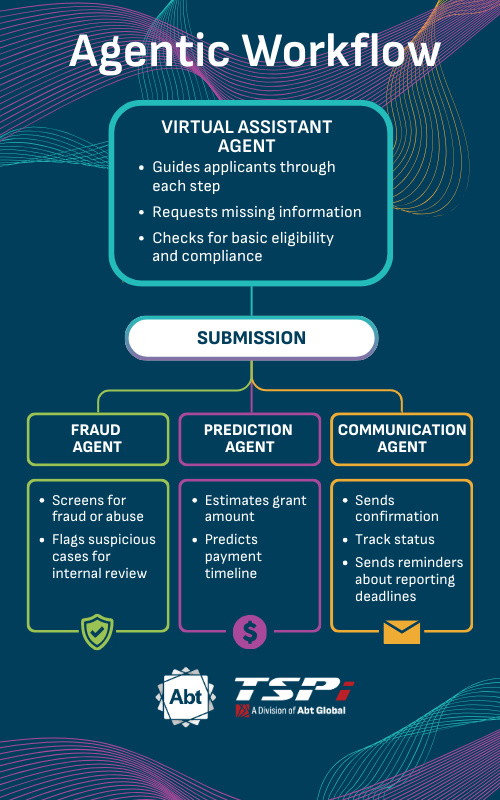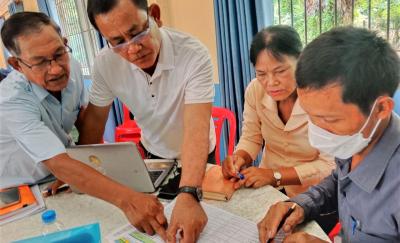Agentic AI for Citizen-Centered Services



We’re at the cusp of a transformation.
Waiting on hold, navigating complex websites, shouting “REPRESENTATIVE!” into an unresponsive bot—we’ve all experienced the frustration of clunky government systems.
But we’re at an inflection point. Intelligent digital agents powered by agentic AI are poised to make these friction-filled experiences a thing of the past. If deployed thoughtfully, they could streamline public services, reduce costs, and rebuild trust in the government’s ability to deliver efficiently.
At recent industry events such as HIMSS Global Health Conference and Salesforce Agentforce World Tour, leaders from Pega and Salesforce demonstrated how agentic AI is already reshaping public sector application development. Approaches differ, but the message is consistent: Usable AI – AI that makes a real difference for users – is here, and it’s ready to help agencies deliver seamless services that meet the moment.
What Is Agentic AI—and Why Should Agencies Care?
Agentic AI refers to intelligent digital agents that act autonomously, learning from interactions and initiating actions on behalf of users. Going beyond automation or chatbots, these agents can handle complex tasks like:
- verifying Medicaid or veterans’ benefit eligibility in real time by cross-referencing existing databases
- processing farm loan applications by guiding users through complex forms and flagging missing information
- matching individuals in crisis to local support services
- monitoring inventory levels and reordering supplies automatically
…. All while learning and improving over time.
For federal agencies—some already piloting agentic AI—this means reimagining how citizens experience public services. And the public is ready. Salesforce’s recent study found 87% of U.S. respondents say they would use an AI agent to navigate public sector processes. Agentic AI can deliver the personalized, timely (think 24/7), and intuitive experiences citizens have come to expect.
Finding the Right Use Cases for Agentic AI in Government
Agentic AI isn’t a silver bullet. A key lesson from leaders we’ve spoken with is that thoughtful application is everything. It works best when applied to the right use cases, where automation can simplify complex processes, but where oversight and trust remain paramount.
Agencies must prioritize the mission, not the technology. Where can AI add the most value? Where can it augment staff, accelerate processing, or proactively assist citizens without adding new risks? Where will it deliver measurable efficiency gains and real citizen impact?


For example:
- Grants Management: Administering grants through rural and agricultural programs often involves complex forms, supporting documents, and strict compliance rules. Agentic AI provides different agents to help with each step of the process. This reduces backlogs, minimizes errors, and helps the U.S. Department of Agriculture teams process applications more efficiently, getting resources to communities faster.
- Benefits Administration: The Social Security Administration (SSA) processes millions of retirement and disability claims annually. Intelligent agents can automate eligibility checks by pulling from verified data sources, clearing straightforward applications instantly, and flagging edge cases for human review. Through Abt’s ongoing work with SSA, we’ve helped improve the predictive models that power these processes, offering insights into how AI can be applied securely, efficiently, and in ways that reduce backlog while maintaining trust.
With More Autonomy Comes More Responsibility
The challenge isn’t adopting AI. It’s making sure the technology is usable, secure, mission-aligned, and capable of delivering visible, measurable outcomes. This requires a combination of explainable AI—systems that make their decisions and reasoning clear—along with human-in-the-loop oversight and strong governance frameworks.
Trust also depends on how securely these systems handle data. Agentic tools often access sensitive personal and financial information, so they must be developed and deployed with rigorous cybersecurity and privacy protections in place. Aligning with federal standards is essential.
We've seen firsthand how the right application of technology can simplify the complex, reduce friction, and bring real value to both citizens and federal teams. Agentic AI isn’t a magic fix—but when thoughtfully applied, it has the power to reshape how services are delivered and experienced.
Public service shouldn’t start with frustration, and it shouldn’t end with shouting “REPRESENTATIVE!” It should just work—quietly, intuitively, and in service of the mission. That’s the future we’re working toward.
Read More
Digital & Data Services

Wyoming’s Plan to Promote Housing and Economic Development
Abt developed a strategic housing action plan, story map, and tool that will help Wyoming implement solutions for its housing affordability challenges.

Abt’s Approach to Practical AI Adoption for Government
Abt’s AI advisory services help agencies move beyond pilots to AI adoption through structured implementation, strong governance, & workforce enablement.

TSPi Enhances Customer Experience with Farmers.gov
The U.S. Department of Agriculture (USDA) faced the challenge of streamlining access to information, tools, and resources for farmers, ranchers, and landowners.

From Silos to Solutions: The Power of Data Linking
Data linking—combining records from multiple datasets—helps businesses, governments, and healthcare providers enhance services, optimize resources, and improve programs.

AI-Driven Efficiency in Public Service: A Q&A with Nora Connor
Government agencies can use artificial intelligence to make better decisions and be more efficient while using Abt’s tools to mitigate risk.

Tracking Post COVID Conditions: Public Health Surveillance
Track PCC uses public health surveillance to learn more about the effects and burden of Long COVID among diverse populations.

Cambodia’s Social Protection Program Enters the Digital Age
Abt played a key role in helping Cambodia create a network with interoperable data management systems to improve the impact of its social protection programs.

Evaluation of the ACO REACH Model
As part of a team with NORC, Abt conducted a mixed methods evaluation of the CMS ACO REACH Model and found savings and quality improvements.

Shelter from the Storm: Addressing the Dual Crisis of Extreme Weather and Homelessness
Homeless response systems need support to strengthen their resilience to extreme weather shocks and the disproportionate harm that extreme weather has on people experiencing homelessness.

Spotlight On: Primary Care
Abt’s experts partner with federal agencies, states, and other organizations to advance evidence-based primary care in the U.S.

TSPi Improves Conservation Services Through Agile Digital Transformation
TSPi is using agile teams to modernize the financial management portion of the Natural Resources Conservation Service’s information technology portfolio.

Understanding Homeless Encampments in Long Beach, L.A. River Basin, and San Fernando Valley
A Conrad N. Hilton Foundation-funded, Abt-led evaluation studied three encampments in Los Angeles.

How to Make Federal Justice Data More User Friendly
Abt is making federal justice data more user friendly through better visualization and filtering capabilities.

